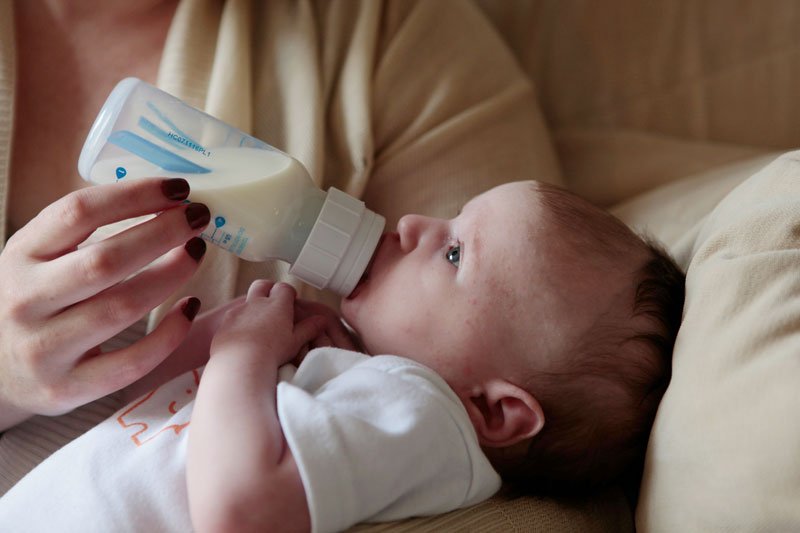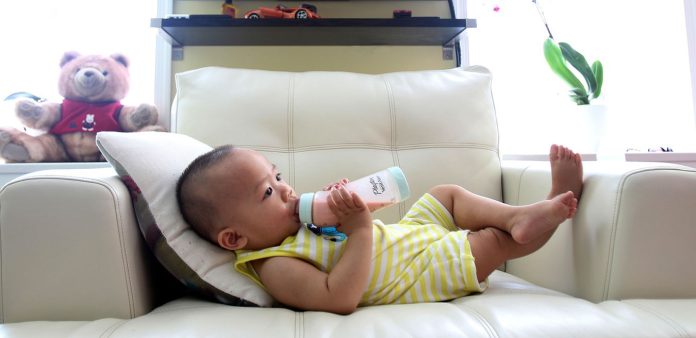As an Amazon Associate, I earn from qualifying purchases
Why Baby Clicking While Bottle Feeding
Bottle feeding is a cherished bonding experience between parents and babies, but what happens when you hear an unexpected clicking sound during feeding time? If you’re puzzled by why your baby is clicking while bottle feeding, you’re not alone. In this article, we’ll explore the possible reasons behind this phenomenon and provide actionable tips to help you address it effectively.
Understanding the Clicking Sound:
The clicking sound that occurs during bottle feeding can be attributed to several factors, including:
Poor Latch:
A shallow latch or improper positioning of the bottle nipple in your baby’s mouth may result in a clicking noise as air is drawn in during feeding.
Read More
Where To Place Baby Monitor
How Many Strollers Do I Need
How To Be Single Parents Guide
Why Does My Car Sound Like a Toy Car?
Tongue Tie:
A tongue tie, a condition where the tissue under the tongue restricts movement, can interfere with your baby’s ability to create a proper seal around the bottle nipple, leading to clicking.
Bottle Nipple Size:
Using a bottle nipple that is too large or too small for your baby’s mouth can cause clicking due to an inadequate seal.
Why It’s Important to Address:
Clicking during bottle feeding may seem harmless, but it can have several implications, including:
Discomfort:
Clicking may indicate that your baby is ingesting excessive air, leading to discomfort, gas, and fussiness.
Inefficient Feeding:
A poor latch and clicking can interfere with your baby’s ability to effectively extract milk from the bottle, potentially resulting in inadequate feeding and poor weight gain.
Tips to Address Clicking While Bottle Feeding:
Now that we understand why babies click during bottle feeding, let’s explore ten practical tips to help address this issue:
Ensure Proper Positioning:
Position your baby in an upright, semi-reclined position during feeding to promote a proper latch and minimize air intake.
Check Bottle Nipple Size:
Select a bottle nipple size that is appropriate for your baby’s age and feeding abilities to ensure a secure seal and prevent clicking.
Encourage a Deep Latch:
Gently guide your baby’s mouth onto the bottle nipple, encouraging them to take a deep latch with their lips forming a tight seal around the base.
Monitor Feeding Pace:
Pay attention to your baby’s feeding pace and adjust as needed to prevent them from gulping air or becoming overly eager.
Burp Frequently:
Pause periodically during feeding to burp your baby, allowing trapped air to escape and reducing the likelihood of clicking.
Experiment with Bottle Angles:
Try different bottle angles to find the optimal position that promotes a secure latch and minimizes air intake.
Address Tongue Tie:
If you suspect that your baby may have a tongue tie, consult with a pediatrician or lactation consultant for evaluation and potential treatment options.
Offer Pacifier as Practice:
Introduce a pacifier between feedings to help your baby practice proper sucking techniques and strengthen their oral muscles.
Seek Professional Guidance:
If clicking persists despite your efforts, or if you have concerns about your baby’s feeding habits, consult with a pediatrician or lactation consultant for personalized guidance and support.
 Be Patient and Persistent:
Be Patient and Persistent:
Addressing clicking during bottle feeding may take time and patience. Be persistent in implementing these tips and remain attentive to your baby’s cues and needs.
Furthermore, consider the type of bottle you’re using for feeding. Some babies may prefer certain types of bottles over others, so don’t hesitate to experiment with different brands and designs to find the one that works best for your little one.
Additionally, practicing paced bottle feeding can also help reduce clicking and promote a more natural feeding rhythm for your baby. This involves holding the bottle horizontally and allowing your baby to control the flow of milk by pausing for breaks and burping as needed.
Lastly, remember that every baby is unique, and what works for one may not work for another. Be patient and observant, and trust your instincts as a parent to find the best solution for your baby’s feeding needs.
By incorporating these additional tips and suggestions into your feeding routine, you can further enhance the feeding experience for both you and your baby, fostering a deeper bond and promoting healthy growth and development.
Conclusion:
In conclusion, understanding why your baby is clicking while bottle feeding is the first step toward addressing this common issue. By implementing the tips provided in this article, you can help promote a smoother feeding experience for your little one, ensuring comfort, efficiency, and bonding during feeding time. Remember to be patient, persistent, and proactive in seeking professional guidance if needed. With time and care, you can overcome clicking during bottle feeding and enjoy precious moments of nourishment and connection with your baby.
As an Amazon Associate, I earn from qualifying purchases




